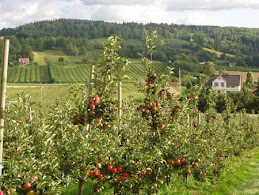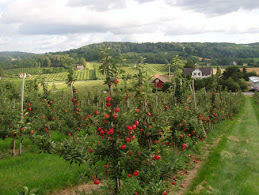B Copper
C Sodium
D Sulphur
Solution: C, Sodium
Sodium oxide, Na2O(s), dissolves in water to form Sodium Hydroxide, NaOH (aq),
Sodium oxide + water → Sodium hydroxide
Na2O(s) + H2O(l) → 2NaOH(aq).
Sodium Hydroxide, NaOH (aq), has a pH value of 14
(From CHEMISTRY Matters, Page 180, Fig 11.11, pH values of common substances).

Sodium in metal form
Picture is obtained from http://upload.wikimedia.org/wikipedia/commons/c/ca/Nametal.JPG.jpg
4. Methylbenzene is an organic solvent. Which statement is true about a solution formed by dissolving ammonia gas in methylbenzene?
A It contains NH ions.
B It does not conduct electricity.
C It has a pH value of less than 7.
D It turns Universal Indicator solution from green to yellow.
Solution: B, It does not conduct electricity. ?
Methylbenzene is also known as toluene is an organic solvent that react with ammonia gas to form organic compound which is not an electrolyte.
From http://dwb4.unl.edu/chemistry/smallscale/SS035c.html

Methylbenzene (known as toluene is flammable) with Silicon
Picture is obtained from http://www.cap.ca/cap/Gifs/CAP/2003c2n02.jpg
7. Which substance produces hydrogen ions when dissolved in water?
A Carbon monoxide
B Nitrogen
C Oxygen
D Sulphur dioxide
Solution: D, Sulphur dioxide
Sulphur dioxide dissolved in water to form sulphurous acid, H2SO3(aq)
sulphur dioxide + water → sulphurous acid
SO2(q) + H2O(l) → H2SO3(aq).
(from CHEMISTRY Matters, Page 364, Acid Rain).
Acid, for example, Sulphurous acid, H2SO3(aq), produces hydrogen ions, H+.
Carbon monoxide, Nitrogen and Oxygen does not form acid when dissolved in water.

The sulphur dioxide Mount
Picture is obtained from http://www.nature.com/nature/journal/v447/n7141/images/447132a-i2.0.jpg
8a. Ammonia gas can be produced by heating calcium hydroxide with ammonium chloride. Write the chemical equation for the reaction.
Heat the chemicals:
ammonium chloride + calcium hydroxide → ammonia gas + water + calcium chloride
2NH4Cl(s) + Ca(OH)2(aq) → 2NH3(g) + 2H2O(l) + CaCl2(aq)
Whenever an ammonium salt is heated with an alkali (for example, Sodium Hydroxide or Calcium Hydroxide), ammonia is displaced from its salt.
(from CHEMISTRY Matters, Page 354, Displacement of Ammonia from its Salts).

8b. The ammonia produced in (8a) was used to produced a concentrated solution of a weak alkali. Explain the meaning of
i) Concentrated solution:
It is a solution that contains a large amount of solute relative to the amount that could dissolve.
ii) Weak alkali:
A weak alkali is an alkali that does not fully dissociates when dissolved in water.
(From CHEMISTRY Matters, Page 180, Concentration and Strength
or http://www.ktf-split.hr/glossary/en_o.php?def=concentrated%20solution).
Reference
- CHEMISTRY Matters (G.C.E. ‘O’ Level), 3rd Impression (2008), by Tan Yin Toon, Chen Ling Kwong, John Sadler, Emily Clare, Published by Marshall Cavendish Education, Printed in Singapore by Times Printers, www.timesprinters.com, Chapter 11 – “Acids and Bases”, Page 169 - 192
- http://upload.wikimedia.org/wikipedia/commons/c/ca/Nametal.JPG.jpg
- http://www.ktf-split.hr/glossary/en_o.php?def=concentrated%20solution
- http://www.nature.com/nature/journal/v447/n7141/images/447132a-i2.0.jpg
- http://www.sptimes.com/2008/01/17/images/tb_Ammonia_450.jpg
- http://dwb4.unl.edu/chemistry/smallscale/SS035c.html
- http://www.cap.ca/cap/Gifs/CAP/2003c2n02.jpg









































.jpg)
.gif)
.jpg)

















































%20-%20%E5%82%B7%E5%BF%83%E7%9A%84%E8%B7%AF%20(Sh%C4%81ng%20x%C4%ABn%20de%20l%C3%B9)%20-%20The%20Road%20of%20Sorrow%20(With%20Subtitle)_11.png)






